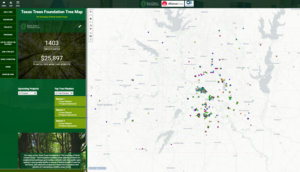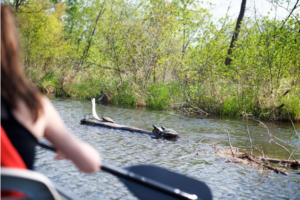Become a Citizen Scientist to Help Create Better Outdoor Spaces
America’s foundation is built on volunteers. French philosopher Alex de Tocqueville in his book “Democracy in America,” published in 1835 remarked that one of American’s unique qualities was our tendency to form associations to advance the common good. This tradition of a civil society that benefits the public continues today through Citizen Science.
What is Citizen Science?
Data collection is often too difficult for one team of scientists. Data can be spread across a large area or need updating on regular intervals, in cases like these volunteers can be the link to help scientists gather necessary data to help make management decisions.
In the case of Urban Forestry, we use Citizen Scientists to help gather tree information in cities to help determine size, health, and species composition of an urban forest. This is an excellent way for volunteers to get involved in the field.
The best part about getting involved is that you don’t need to be an expert in the field to participate in a citizen scientist project. Citizen scientists typically are not professional scientists. Rather, they are curious or concerned people who collaborate with professional scientists in ways that advance scientific research on topics they care about.
It has never been easier to get involved and start collecting data through the use of technology. Here are a few apps to get you started, including one that you can use help the Texas Trees Foundation gather data on our tree population right here in DFW:
Texas Trees Foundation Tree Plotter
 Price: Free
Price: Free
Platform: iPhone, Android
Website: https://pg-cloud.com/TexasTrees/
Help Texas Trees Foundation gather information on the trees where you live, work and play. By logging on, you will learn how to measure a trees diameter, key for our areas most common species, and detailed instructions for uploading trees to the Tree Plotter. Your participation will help guide future tree planting decisions such as species selection and provide valuable data about our urban forest.
Leafsnap
Price: Free
Platform: iPhone only (Android under development)
Website: http://leafsnap.com/
Anyone can ID a maple tree. But how do you identify an unfamiliar tree?
It’s a snap with Leafsnap, a guide to more than 130 common Ontario trees. Leafsnap uses visual recognition software. Just hold one leaf against a white background—a piece of paper will do—and “Snap It.”
iNaturalist
 Price: Free
Price: Free
Platform: iPhone, Android
Website: http://www.inaturalist.org
If you want to explore ecosystems around the world, iNaturalist is the app for you. It contains over two million sightings of 85,000 species, contributed by a global community of naturalists, scientists and ordinary citizens.
